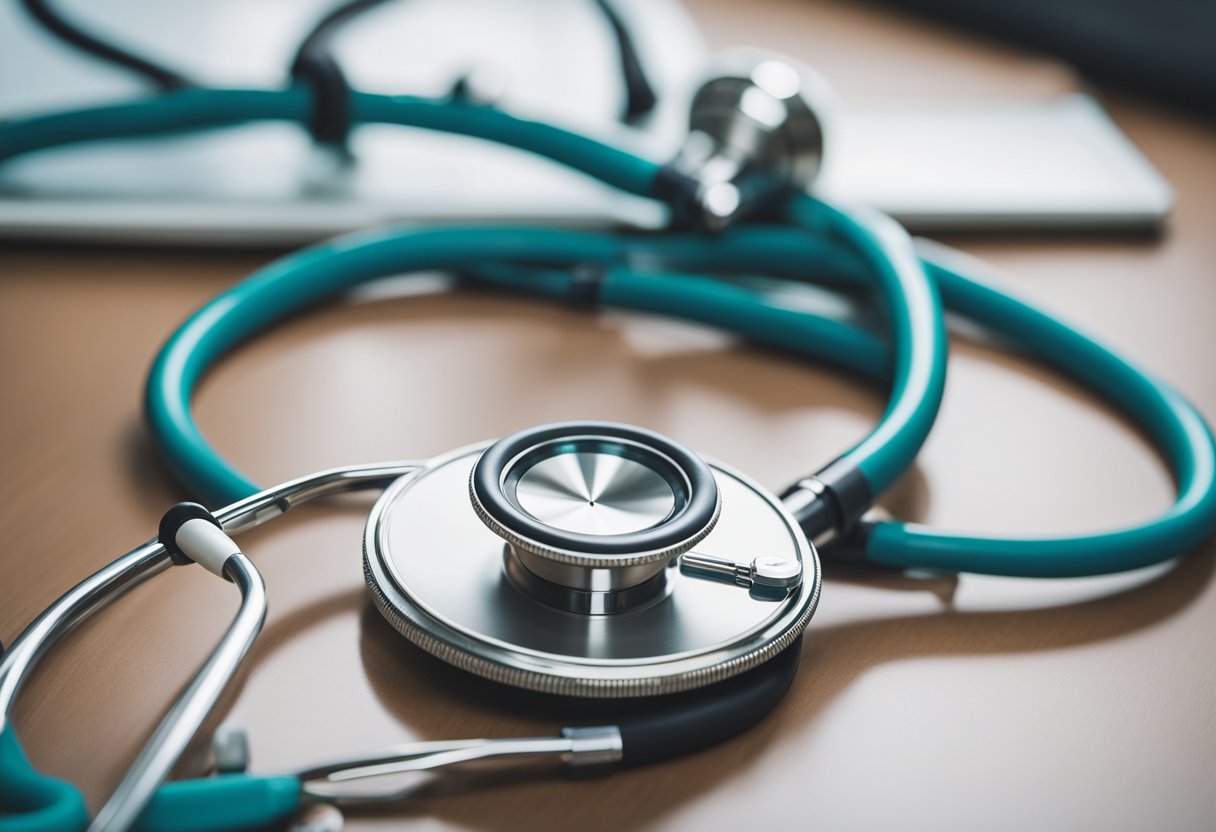
Space Tourism Health Screening: As space tourism emerges from the realm of science fiction into reality, health screening for passengers becomes a crucial consideration. The allure of viewing Earth from the cosmos and experiencing weightlessness is an enticing prospect for many. Yet, it’s imperative that we appreciate the unique strains space travel imposes on the human body, making rigorous health screenings a necessity for participants. Pioneering companies and regulatory bodies are therefore tasked with developing comprehensive standards to ensure the safety and well-being of space tourists.
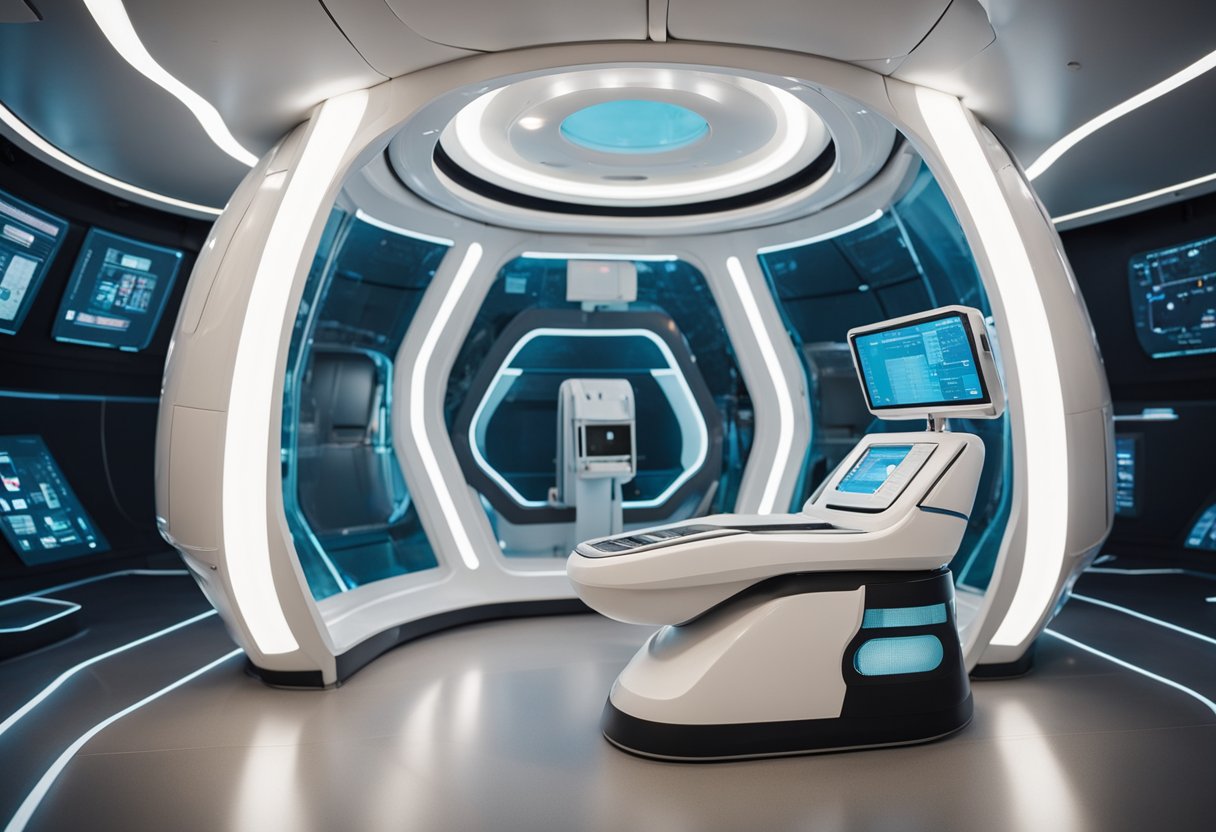
One of the primary physical challenges faced by space travellers is adapting to microgravity. This environment significantly impacts bodily functions, which can lead to issues such as muscle atrophy and bone density loss. Therefore, it’s essential that potential space tourists are screened for their physical capability to endure the stresses of space. Beyond the physical, psychological factors also play a significant role; the confined and isolated conditions of space travel can exert stress on the mental health of individuals. A thorough assessment of both physical resilience and psychological preparedness is therefore paramount.
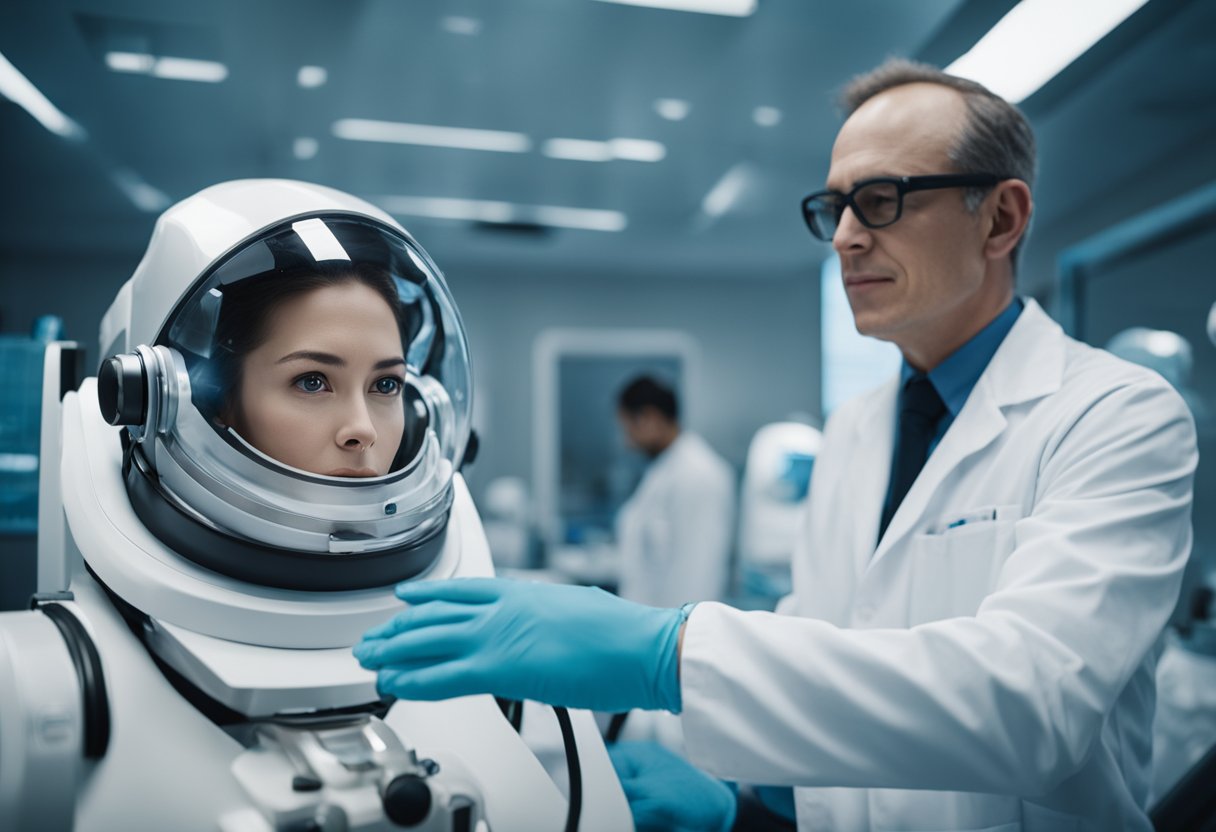
As the frontier of human exploration extends beyond the confines of Earth, we witness the dawn of a new era where space travel transitions from scientific missions to a tourism sector. Our focus in this section is to unravel the development of space tourism and identify the main contributors fuelling its growth.
Space tourism has progressed from a distant dream to a tangible experience. NASA’s historical achievements in human spaceflight laid the groundwork for our aspirations to reach the stars. The notion of civilians travelling to space was once futuristic, but today, it’s a burgeoning segment of adventure and luxury tourism. Agencies like the Canadian Space Agency contribute research and technology that facilitate this shift.
Several private companies have been pivotal in making commercial space travel a reality. Notable among them, Virgin Galactic, SpaceX, and Blue Origin spearhead this movement, each offering unique visions for the future of space tourism. These firms are not only promising suborbital joyrides but also conceptualising voyages to the International Space Station and beyond. Commercial space companies have reinvented the scope of space missions, with private citizens now akin to astronauts. We are at the cusp of a new domain in human adventure, where websites like SpaceVoyageVentures.com are documenting the developments in this exciting industry.
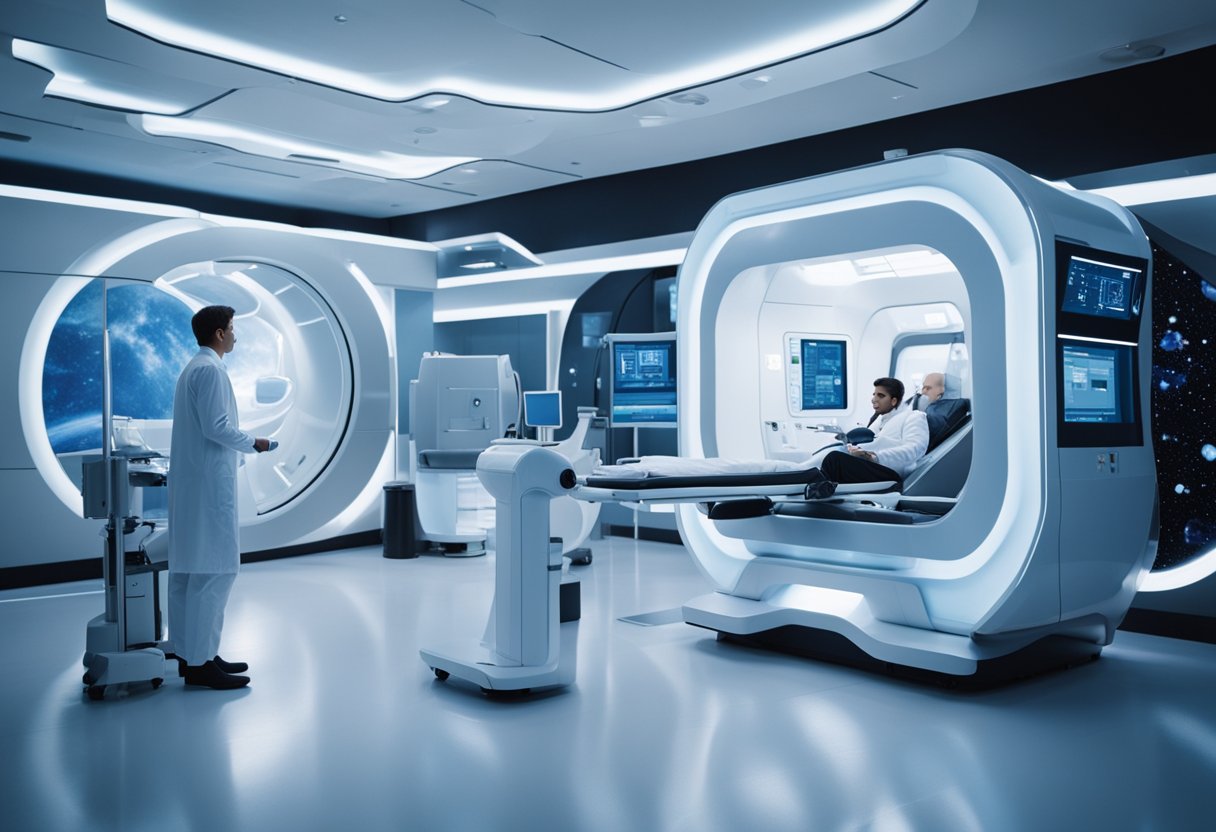
As space tourism becomes a burgeoning field, we recognise the paramount importance of thorough health screening to ensure the safety and well-being of every space tourist. Our protocols are designed to establish a robust safety net that adheres to the highest medical standards.
We have instituted a comprehensive medical screening process for all potential space tourists. This involves a rigorous assessment that includes but is not limited to the following:
Our transdisciplinary healthcare team, which includes specialists across various medical fields, orchestrates these examinations to maintain impeccable standards of care.
To be eligible for space travel, candidates must meet the following criteria:
It’s vital for us to adhere to stringent medical standards to mitigate the risks involved in space tourism. This is why our processes are continuously refined and updated as we learn more with each space voyage. To learn about current and future space tourism opportunities, visit SpaceVoyageVentures.com. Our mission is crystal clear: to uphold safety while pioneering the realm of commercial space travel, making the cosmos accessible to those who dream of the stars.
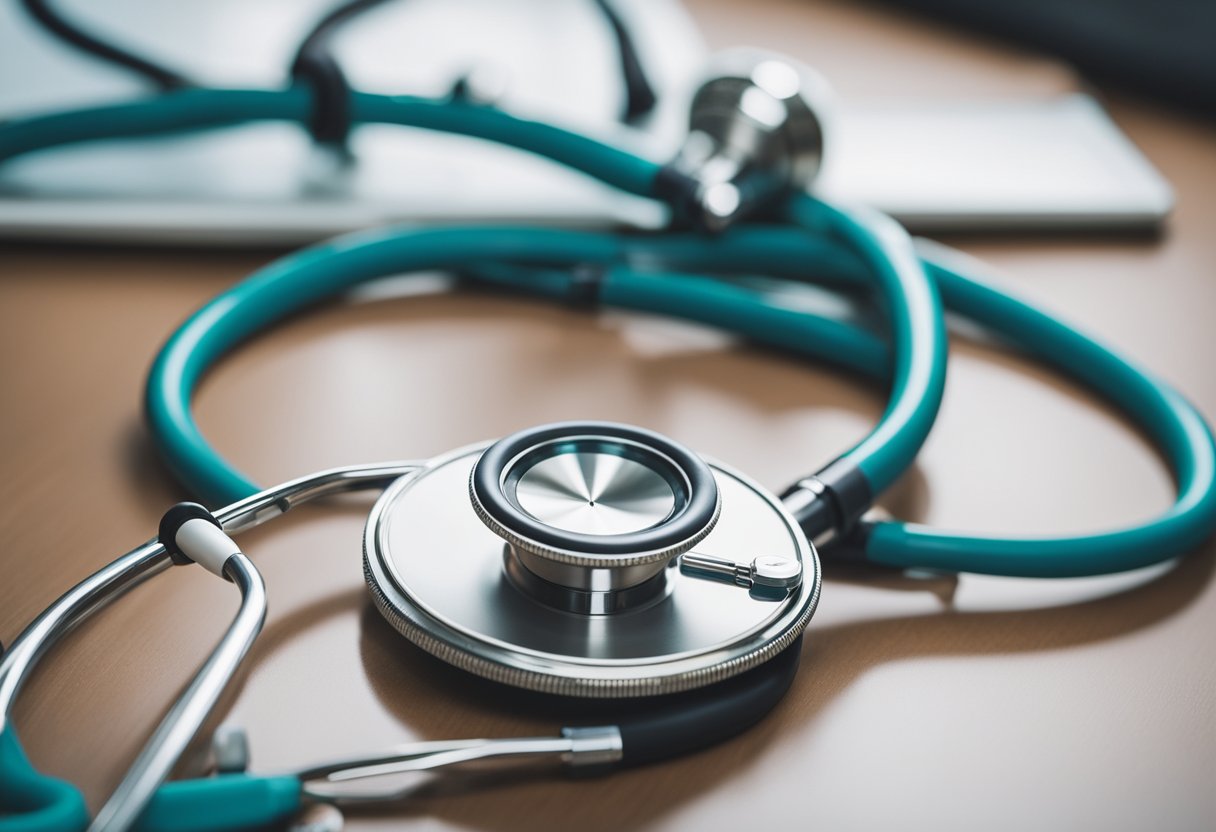
When we consider the physical health of potential space tourists, there are key physiological systems that require careful evaluation and monitoring. These include the cardiovascular and circulatory systems, musculoskeletal health, and any chronic health conditions that might impact the individual’s well-being during space travel.
Our cardiovascular and circulatory systems may be significantly affected by the unique conditions of spaceflight, such as microgravity. Individuals with cardiovascular disease or circulatory disease are at an increased risk of complications. For example, atherosclerosis, a condition characterised by the hardening and narrowing of the arteries, could potentially be exacerbated in space due to alterations in blood flow. Space travellers must be assessed for any signs of heart disease to ensure cardiac health is met.
Key Risk Areas:
In microgravity, the absence of weight-bearing activities leads to bone loss and muscle atrophy. Bone cells undergo alterations which could result in reduced bone density and strength, increasing the risk of fractures. Resistive exercise regimes are vital in maintaining musculoskeletal integrity. The risk of musculoskeletal injuries, especially at the myotendinous junction, is something we must guard against through prescribed exercise routines. To combat bone density issues, treatments such as bisphosphonates may be considered prior to embarking on space travel.
Preventative Measures:
Chronic health conditions, such as type 2 diabetes or kidney stones, could be severely impacted by the conditions of space travel. We must ensure that such conditions are well-managed and stable, as the unique stressors of space can magnify complications. Regular monitoring and adaptation of medication or treatment regimens may be necessary to maintain human health throughout the journey.
Management Strategies:
We take these considerations very seriously to ensure the safety and well-being of individuals participating in space tourism ventures, as explored by SpaceVoyageVentures.com in their comprehensive documentation of space travel opportunities.
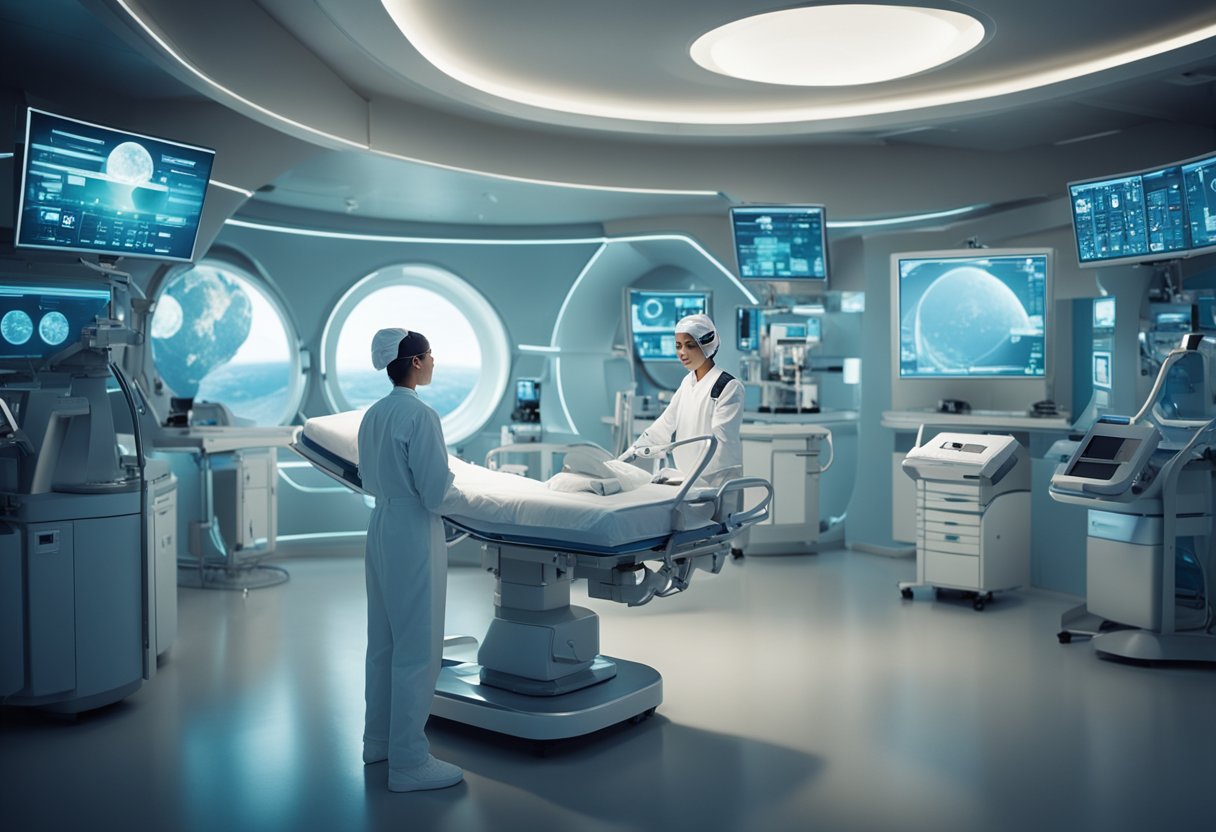
As we turn our gaze towards the next frontier of travel, it’s imperative to acknowledge the psychological challenges that come with space tourism. The mental well-being of passengers beyond Earth’s atmosphere is a crucial aspect of the journey, one we explore in depth.
Mental Health: Space travel imposes unique stresses on the mind. Our mental health can be affected by factors like prolonged isolation and confinement. It’s not just about being physically apart from others; there’s an emotional component to consider. A review on Space Tourism Psychological Assessment suggests that while physical health issues are manageable, the impact of psychological conditions on safety and well-being during spaceflight requires thorough attention.
Depression and Anxiety: The risk of experiencing depression or anxiety can be higher in space due to the intense nature of the environment. Factors such as a lack of social interaction, altered sleep patterns, and the novelty of living in a microgravity environment contribute to this. According to a State-of-the-Art Review on human health during space travel, endogenous processes such as circadian rhythms and mental health can be disrupted, leading to sleep disturbances and mental health issues.
Psychological Assessment: Before embarking on a journey with companies like SpaceVoyageVentures.com, a comprehensive psychological assessment is critical. It ensures that prospective space tourists are mentally prepared for the immobilization and isolation they may face during their voyage.
Psychological Conditions: The success of the space tourism industry depends on our ability to manage and support the psychological conditions of spaceflight participants, recognising that the confined and isolated environment of space can have significant impacts on an individual’s psychological state.
To preserve the mental well-being of space tourists, we advocate for ongoing research and the development of robust psychological support systems, tailored to the unique experience of spaceflight. Our approach is to address these concerns with the same rigour we apply to physical health, ensuring that every aspect of the passenger’s journey is safeguarded.

Microgravity, the condition of weightlessness experienced during spaceflight, has considerable effects on human physiology. We must prepare for these changes through effective countermeasures and interventions.
In the realm of microgravity, our bodies undergo a series of health issues as they adapt to the weightless environment of space. Fluid redistribution leads to a puffy face and skinny legs, commonly referred to as ‘bird legs.’ On a vascular level, venous thrombosis can occur due to altered blood flow.
One pervasive issue is the loss of bone density. Without the constant pull of gravity, our bones lose minerals, with an average calcium loss of more than 1% per month. This demineralization mirrors osteoporosis, making fractures more likely upon return to Earth.
Muscle atrophy is another significant concern due to reduced use of muscle groups used for posture on Earth. Effects on the heart include potential cardiovascular deconditioning since it doesn’t need to work as hard to pump blood throughout the body.
Our immune system is also less effective in microgravity, with changes that may lead to an increased risk of infection. Current research delves into how even the body’s healing processes, such as wound recovery, can be impaired.
Countermeasures are essential to mitigate the health effects of prolonged exposure to microgravity. Compressive garments help manage fluid redistribution, and exercise equipment aboard spacecraft offers resistance to simulate the effects of gravity on muscles and bones, helping reduce both muscle atrophy and bone density loss.
Dietary interventions play a crucial role; astronauts need an adequate intake of vitamins and minerals to counteract bone and muscle loss. Pharmaceuticals may also be required to maintain bone density and muscle mass.
For cardiovascular health, astronauts perform regular aerobic and resistance exercises to maintain heart and vessel function. Research into countermeasures and interventions at institutions like NASA helps us develop new strategies for maintaining astronaut health during long-duration spaceflights.
Space tourism companies like SpaceVoyageVentures.com need to consider these health implications seriously, ensuring that potential space tourists are well informed and adequately screened for any underlying health conditions that could be exacerbated by a microgravity environment.
Before venturing into space, it’s crucial we understand the risks associated with space radiation and the strategies in place to mitigate them. Space travel exposes us to ionising radiation, which can lead to acute radiation syndromes and long-term health issues.
Ionising radiation in space mainly takes two forms: solar particle events (SPEs) and galactic cosmic rays (GCRs). SPEs consist of protons ejected by the sun during solar flares and coronal mass ejections, while GCRs are high-energy particles from outside our solar system. Research, including findings from the NASA twins study, has deepened our understanding of how different radiation types affect human health.
We employ various tactics to protect astronauts from the health risks posed by space radiation. On spacecraft, storm shelters provide a refuge during intense radiation events. Personal protective gear, including radiation protection garments, also contribute to shielding. Additionally, mission planning aims to keep exposure As Low As Reasonably Achievable (ALARA). For instance, SpaceVoyageVentures.com outlines how advances in protection and adherence to exposure limits are pivotal considerations in current and future space tourism endeavours.
In anticipation of the burgeoning space tourism industry, we must address the unique challenges posed by space travel on human health. With the aim to safeguard tourists, our focus encompasses advancements in space medicine and rigorous research.
We’ve observed significant progress in space medicine, particularly with the application of precision medicine. Precision medicine tailors health care to the needs of the individual, which is particularly crucial in space, where every astronaut’s response to the environment can vary. This approach is essential for monitoring astronaut health and predicting potential medical issues during spaceflight.
Among the notable innovations is the development of enhanced wound healing protocols suited for the microgravity conditions of space, ensuring that astronauts recover efficiently from any injuries incurred. Furthermore, new research into adaptive immunity in space has yielded insights into how our bodies may react to pathogens outside of Earth’s atmosphere.
In the realm of ongoing research, NASA research is continually propelling us forward. They focus on understanding the effects of microgravity on the human body, ranging from musculoskeletal degradation to shifts in bodily fluids. Neuroscience research in space has provided us profound knowledge on how spaceflight affects neurological health, influencing everything from sleep patterns to sensory perception.
The Space Flight Participant (SFP) research augments space medicine by setting the groundwork for SFP safety, including collaborative studies on the psychological stresses of space travel. With the inception of platforms like SpaceVoyageVentures.com, we actively document and scrutinise the health criteria for current and upcoming space travel opportunities, ensuring that future tourists are well-informed and prepared for their journeys.
Our commitment and involvement in research not only fortify our knowledge in space health but also bolster the tiers of safety for the next wave of explorers venturing into the cosmos.
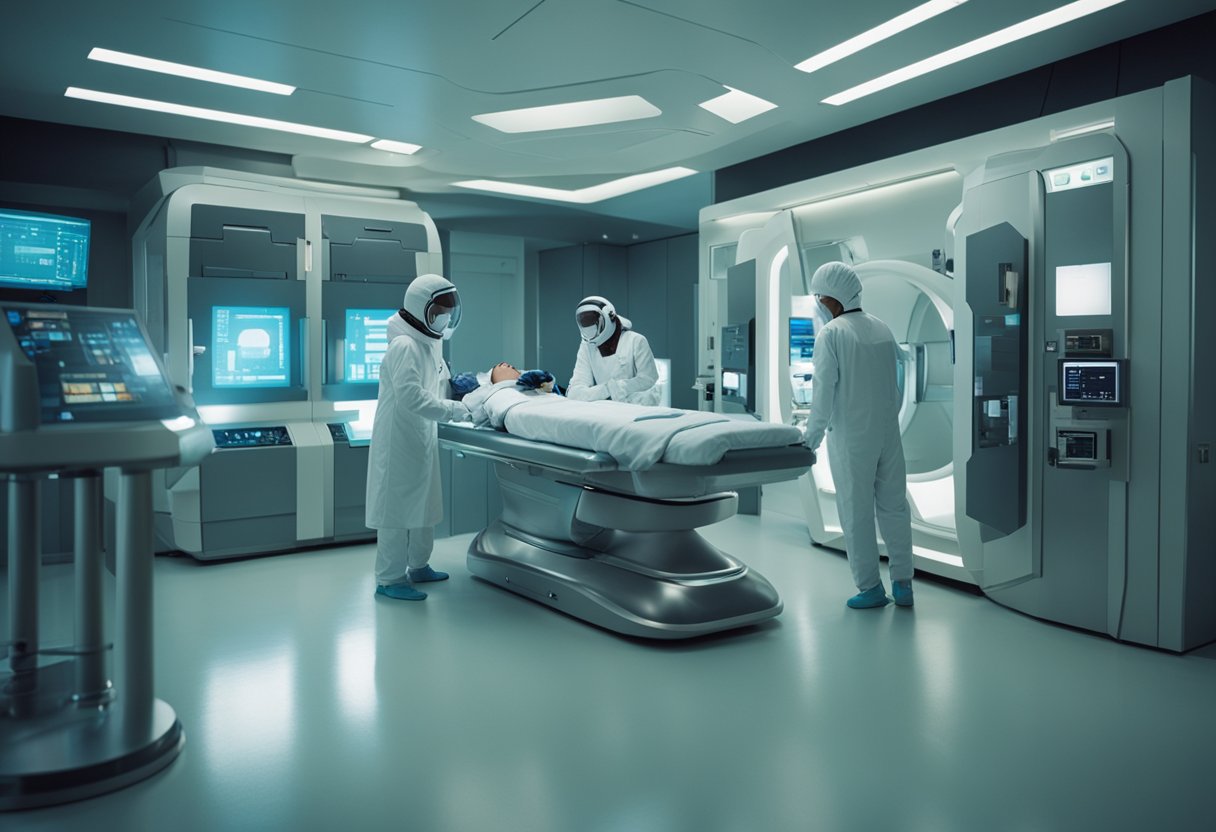
We recognise the importance of comprehensive training and a strong safety culture for ensuring that spaceflight participants are prepared for the journey ahead. Our training programmes are meticulously designed to address individual sfp risk and promote the highest standards of safety in emergency scenarios.
Objectives:
Preparation before a spaceflight is crucial to familiarise participants with the environment they will encounter and the safety procedures they may need to follow. Our pre-flight training includes an overview of the spacecraft’s systems and layout, orientation to the physical effects of launch and re-entry, and guidance on living in microgravity. We emphasise the development of a safety culture that starts well before launch, ensuring all participants understand the importance of safety protocols and their role in maintaining a secure environment.
Focus Areas:
During the emergency scenarios training, we conduct simulations of possible in-flight emergencies, ranging from medical situations to sudden cabin depressurisation. Our participants are trained in the use of medical kits, and basic life support techniques, and are briefed on the chain of command during an incident. Spacecraft evacuation procedures are rehearsed rigorously, ensuring every spaceflight participant knows their emergency exit routes and the correct usage of survival gear. Clear communication is critical during emergencies; hence, we conduct regular communication drills to prepare participants for the unexpected.
By investing in thorough training and safety, we at SpaceVoyageVentures.com are committed to paving the way for safe and exhilarating space travel experiences. We understand that preparation and knowledge are the bedrock of a successful space tourism industry.
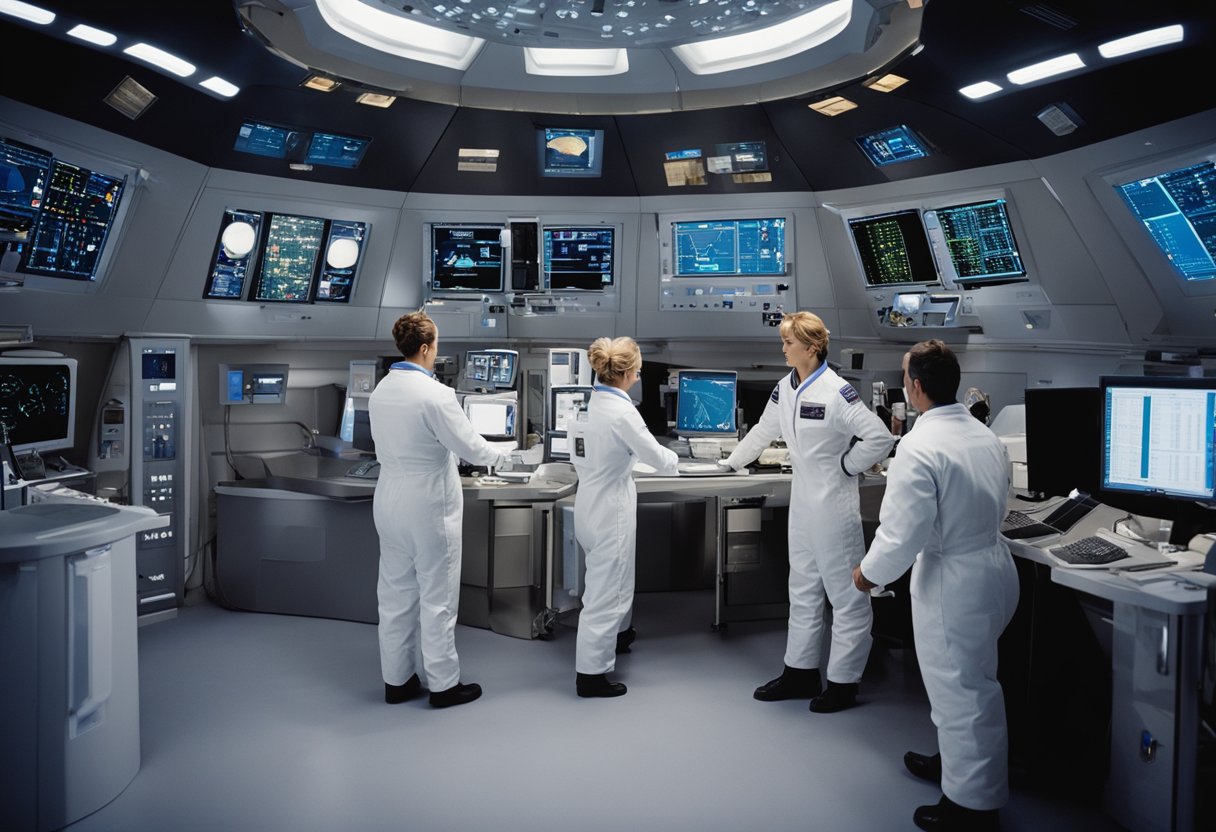
In this section, we’re discussing the stringent frameworks and ethical principles essential for health screenings in space tourism. These include both national and international regulations that ensure safety and uphold the integrity of space travel activities.
Guidelines and Regulations: To protect participants in space tourism, robust guidelines have been established by various entities. One critical player is the Federal Aviation Administration (FAA), which sets domestic standards for commercial spaceflight. Internationally, agreements and guidelines are less concrete, but there is an emerging consensus on the need for universally accepted standards of care in space tourism.
Occupational Surveillance: Such standards are often drawn from established occupational surveillance practices already used in comparable industries. Our duty is to ensure that these guidelines are followed meticulously in health screening protocols to safeguard all involved in the nascent enterprise of space tourism.
Ethics: Within the realm of space tourism, we face numerous ethical dilemmas. Ensuring the safety of participants, for instance, raises questions about the level of risk acceptable for non-professional astronauts. Commercial Space Launch Amendments Act of 2004 encourages a learning period for companies, highlighting a balance between innovation and the establishment of safety standards.
Informed Consent: A vital part of our ethical framework is the concept of informed consent. Prospective space tourists must be fully aware of potential health risks and the experimental nature of space travel, as documented by various sources like SpaceVoyageVentures.com.
By ensuring adherence to these regulatory and ethical guidelines, we contribute to the responsible and sustainable growth of space tourism.
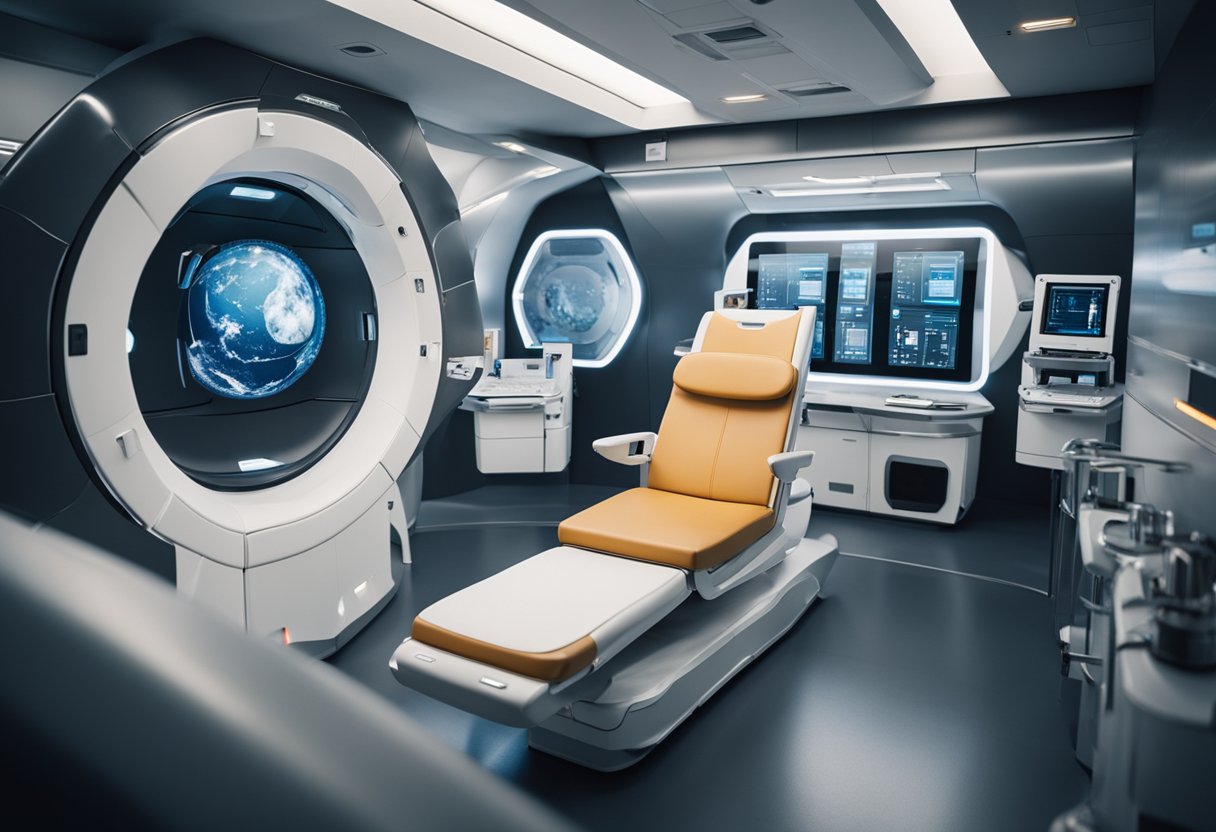
As we stand on the precipice of a new era in space exploration, two pivotal facets come to the fore: the integration of emerging technologies and artificial intelligence, and the complex challenges of long-duration space exploration. Both are crucial in shaping the way professional astronauts and future tourists will travel through space, ensuring their health and safety on journeys that may span months or even years.
In the realm of space exploration, artificial intelligence (AI) is becoming an indispensable ally. We’re developing AI systems capable of automated health monitoring and real-time decision-making, potentially reducing the risk to human life. For instance, through AI, we might anticipate and manage cardiovascular risk factors that astronauts face during space travel. Integrating these technologies ensures that both NASA astronauts and space tourists are better equipped to handle the rigours of space.
When considering long-duration space travel, we must address the various health challenges that extended periods in space pose. Our ongoing research aims to mitigate the effects of microgravity on muscle and bone density, while also devising protective measures against space radiation. By enhancing our spacecraft with advanced life-support systems and utilising AI for health management, we support the safety and well-being of all on board, whether they’re professional astronauts or participants in ventures like the ones chronicled on SpaceVoyageVentures.com.
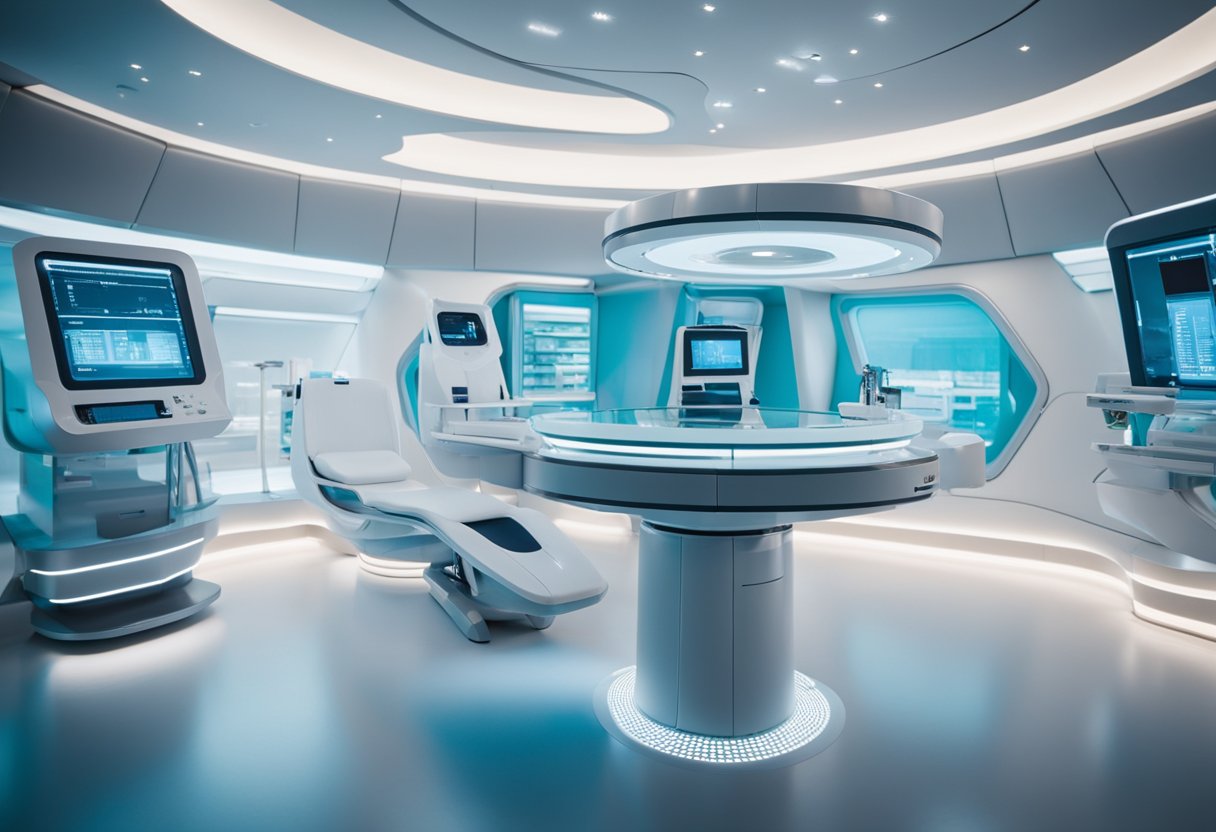
Before setting off on a space tour, it is essential for travellers to understand the health requirements and potential effects involved. Below, we have answered some of the most common questions regarding medical screenings and the health implications of space tourism.
Depending on the company and destination, health screenings typically involve a comprehensive medical examination to evaluate cardiovascular fitness, full blood work, and psychological stability. As space health research progresses, specific requirements may vary or become more rigorous.
Microgravity can lead to muscle atrophy, fluid redistribution, changes in coordination and balance, and a temporary adjustment period upon return to Earth’s gravity. It’s crucial to be aware of these changes to prepare appropriately for your journey.
Space tourists should have good cardiovascular condition, absence of serious health issues, and a reasonable level of fitness. The ability to withstand the g-forces experienced during launch and re-entry is vital.
Concerns about the long-term health implications relate to radiation exposure, the potential impact on vision, and bone density loss. Research into these effects, especially for the duration of typical tourist trips, continues to evolve.
Space travel can affect cardiovascular health through fluid shifts, potential radiation exposure, and changes in blood vessels and the heart’s shape. However, tourists are likely to experience these on a much smaller scale than long-term astronauts.
Prospective space tourists undergo assessments to ensure they can cope with the stresses and confinement of space travel. Psychological readiness is just as important as physical health to guarantee a successful space experience.